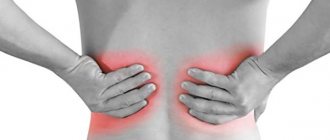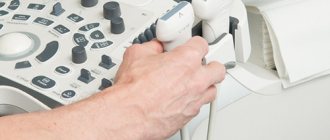The essence of the pathological process
If we talk about diseases that pediatricians regularly encounter in their practice, every third child, unfortunately, suffers from metabolic disorders of the urinary system. It should be noted that we are not talking about a separate unit in nosology. This is a complex syndrome consisting of a large group of nephropathic abnormalities with different etiologies and pathogenesis:
- E79 - disorder of purine metabolism;
- E74.8 - oxaluria and oxalose;
- E83.8 - other mineral metabolic disorders.
All these diseases have in common that they are accompanied by metabolic disorders. A crystalline sediment appears in the urine, which leads to damage to the parenchymal structure of the kidneys and other parts of the urinary system.
In its normal state, urine is a solution of salts, supersaturated with various components. Substances with dispersion functions maintain the liquid in a state of dynamic equilibrium. When crystals begin to form in the genitourinary system, this balance is disrupted, blurring the line between protective and damaging types of factors.
As for the factors that contribute to the development of the disease, they are exogenous (internal) and endogenous (external).
Among the external factors, the most frequently identified are:
- living in a dry and hot climate;
- composition of drinking water (as a rule, it is very hard);
- high levels of radiation on the Sun;
- lack of certain substances in the body (for example, iodine and magnesium);
- excess of other substances in the body (for example, calcium or strontium);
- nutritional disorders (vitamin deficiency or, conversely, hypervitaminosis D), abuse of protein foods, lack of fluids, etc.;
- side effects of medications (diuretics, antibiotics, cytostatics and sulfonamides).
Internal factors include:
- congenital pathologies of the urinary system (especially those that are expressed in impaired urinary outflow);
- inflammatory diseases of the kidneys and urinary tract;
- extreme loss of fluid from the body due to any illness or stress;
- calcium metabolism disorder;
- prolonged bed rest or immobilization;
- increased level of absorption of oxalates or calcium in conditions when the intestinal walls become highly permeable. This happens with food allergies, inflammation of any part of the intestines and serious metabolic disorders.
In addition, protective factors—substances that retain salts in the form of a solution—play an important role in the development of the pathological process. They are partly found in the blood plasma and are the “starting material” for the filtration of primary and final urine. They are secreted by the epithelium of the renal tubules.
The amount of colloidal components of urine depends on biologically active substances: trypsin, cathepsins, pepsin, etc. Their function is closely related to acidic environments and the action of substances of inhibitory and activator types. If there are insufficient protective factors in the body, predisposing factors prevail, and the premorbid background is accompanied by infectious diseases or injuries, crystals begin to form in the urinary system, or, in the worst case, stones.
Places for crystal deposition are usually the collecting ducts, interstitial space and renal tubules. The formation of crystals leads to the development of a complex inflammatory process of an immunocomplex nature. Its next stage is secondary damage to kidney cells - nephrons.
The level of damage to kidney cells can be different, and the clinical picture of the disease directly depends on this. Nephropathies include:
- acute renal failure (ARF);
- tubulointerstitial nephritis;
- urolithiasis;
- diathesis of uric acid type;
- nephropathy with asymptomatic course.
Regardless of which version of the disease the patient has, metabolic disorders result in fibrous proliferation of renal tissue. Calcium metabolism deteriorates, resulting in a failure in the concentration work of the kidneys.
Prevention and prognosis
In most cases, the prognosis for dysmetabolic nephropathy in children and adults is favorable. If you adhere to proper nutrition and carry out drug therapy, you can achieve normalization of urine composition in a short period of time.
The prescribed treatment does not always give positive results. In some cases, especially with inadequate therapy, complications may develop - pyelonephritis, renal failure, etc. To prevent negative consequences and the disease in general, it is recommended to adhere to the following rules:
- Healthy food;
- observe drinking regime;
- promptly identify and treat provoking pathologies;
- undergo control examinations of the urinary tract 2 times a year.
To prevent relapse of the disease, the doctor prescribes courses of antimicrobial therapy with uroseptics and phytouroseptics. In any case, the child is registered at the dispensary. As for the army, a teenager is fit for military service, but only in the absence of associated complications.
Dysmetabolic nephropathy in a child or adult patient is not a death sentence. Despite the favorable prognosis, you should not rely on self-medication. Any disease requires qualified help.
Types of dysmetabolic nephropathies
Nephropathies caused by disorders of oxalate metabolism are the most common forms of dysmetabolic disorders in the kidneys. Oxalates are salts of oxalic acid. There is also a violation of urate metabolism here. In any case, each variant of metabolic nephropathy belongs to one of two large groups into which these diseases are usually divided:
- nephropathy of hereditary or congenital nature. Metabolic processes are disrupted at the genetic level;
- nephropathy of secondary origin.
Primary oxaluria is a rare occurrence. Most often, pediatricians have to deal with secondary pathologies. It is known that the formation of oxalates, which are excreted from the body in the urine, occurs as a result of intense metabolic processes. They are formed from a number of amino acids: serine, hydroxyproline, glycine and partly ascorbic acid. A small percentage of oxalates are absorbed into the body by consuming foods that contain them. For example, a typical diet contains from 100 to a little over 900 mg, and the amount of oxalate content depends on the annual season. At the same time, no more than 5% of their total number is absorbed into the intestines.
Under normal conditions of the body's functioning, about 10% of oxalates excreted in the urine contain ascorbic acid and 40% glycine. Glycine enters the body as it is found in food. Sometimes patients are prescribed medications based on glycine, especially in neurological practice, so corresponding side effects may be observed.
Free consultation on training issues
Our consultants are always ready to tell you about all the details!
Oxalate nephropathy does not have specific symptoms. It often manifests itself as recurrent pain in the abdominal area with a burning sensation when urinating. Sometimes the genitals can become inflamed, since the mucous membranes and mucous membranes are constantly irritated. Also, other dysuric disorders are characteristic of oxalate nephropathies. When urinalysis is assessed, it appears rich, often with sediment and classic signs of renal pathologies:
- high specific gravity of urine;
- presence of microhematuria;
- protein in urine;
- a lot of leukocytes and oxalates.
In children, oxaluria is usually discovered by chance, most often as a background to other diseases. Moreover, the first manifestations of oxaluria are observed at a young age, from one to six years, and periods of exacerbation occur during periods when the child begins to rapidly grow and develop (seven to eight, as well as ten to fourteen years).
In addition to oxaluria, there are also primary uricosurias. First of all, these include gout, which is inherited in an autosomal dominant manner. The cause of gout is a genomic defect that causes some enzymes in the body to change their activity. The endogenous production of purine substances becomes more intense, resulting in increased production of uric acid.
Gout is a systemic disease that affects not only the kidneys, but also the nervous system and other organs, including the heart. Gout is often accompanied by:
- obesity;
- arterial hypertension;
- migraine;
- joint pathologies;
- allergic reactions (including bronchial asthma).
Gout is considered a disease of adults that begins after the age of 40, but one of its first symptoms can also be observed in children - in the form of uricosuric nephropathy.
Uricosuric nephropathies can also be secondary. There are many diseases accompanied by increased production of uric acid. First of all, we are talking about leukemia, hemolytic anemia, the consequences of taking cytostatic drugs, antibiotics and hormones. There are practically no differences in symptoms between different types of uricosuria.
Regardless of the reason for the formation of crystals in the urine, they are deposited in different parts of the kidneys (tubules, tubes), which leads to impaired urinary outflow, the addition of an infectious inflammatory process and pyelonephritis. Tubulointerstitial nephritis or urolithiasis may also develop. Nephropathy is diagnosed based on:
- collecting anamnesis that clarifies the hereditary nature of the disease and its risk factors;
- patient complaints;
- clinical manifestations;
- data obtained after taking tests.
An accurate diagnosis is made only after careful comparison of the results of clinical and laboratory examinations.
Diagnosis of the disease
If signs of abnormal kidney function appear, you should consult a doctor and undergo a full diagnostic examination. Laboratory testing of urine is the main diagnostic method for the presence of nephropathy. General and biochemical analyzes allow:
- identify salt crystals in urine;
- determine their concentration (in dissolved form);
- detect the presence of pathogenic microorganisms that contribute to the formation of crystals;
- measure the density of urine.
By conducting a special study of AKOS (anticrystal-forming ability), doctors determine how effectively salts dissolve in urine and are excreted along with it from the body.
To determine the size of the kidneys, the condition of their walls, the presence of pathological changes or foreign inclusions (sand and stones), instrumental examination methods are used:
- Ultrasound, based on the varying ability of internal organs (depending on their density) to reflect ultrasonic waves;
- radioisotope examination, for which special marker drugs are introduced into the body.
The combination of the measures described above allows the specialist to most accurately make a diagnosis (determine the type of metabolic nephropathy) and prescribe the most effective treatment.
Basic Diet Recommendations
In the treatment of dysmetabolic nephropathy, diet has a very important therapeutic value. With its help, you can significantly reduce the salt load on the kidneys. The recommended menu is determined by a specialist in accordance with the form of nephropathy.
If you have oxalate dismetabolic nephropathy, you should refrain from eating strong meat broths, jellied meat, sorrel, spinach, cranberries, beets, carrots, cocoa and chocolate. Preference should be given to dishes made from cabbage and potatoes, salads with boiled meat, porridges and soups. Berries, pears, peaches, apples, apricots, bananas, dried apricots and prunes are recommended as dessert.
For patients with the urate type of nephropathy, the diet is usually based on dairy and plant products. The main dishes are milk soups and porridges (with the addition of butter), vegetable salads with vegetable oil. It is necessary to limit the consumption of meat (and products prepared on its basis), beans, peas, nuts and cocoa. You should also avoid plums, gooseberries, cranberries and sour apples.
The diet for phosphate nephropathy involves limiting the consumption of cheese, liver, chicken, beans, chocolate, sweet pastries, fish caviar and butter. The daily diet is based on any meat dishes, porridges with water (with the addition of vegetable oil). Watermelons, cranberry juice and weak tea are recommended to complete the meal.
With cystine nephropathy, eggs, cheese, cottage cheese and fish are excluded from the diet.
Naturally, the above recommendations are for general informational purposes only. Specific products (as well as their quantity) can only be determined by a specialist, taking into account the age and weight of the patient, as well as the degree of identified metabolic pathology of the kidneys.
Folk remedies
The treatment of dysmetabolic nephropathy with folk remedies must be treated very carefully. The generally accepted statement that treatment with various decoctions of herbs and plants cannot cause harm is erroneous. The fact that many components of folk recipes, at first glance, will not cause harm to a healthy person, does not mean that they are useful to the patient. In any case, before starting herbal medicine, be sure to consult your doctor.
For information, here are the simplest and most effective (according to traditional healers) recipes for the treatment of metabolic nephropathy:
- Pour one tablespoon of carefully crushed leaves of burdock, lingonberry and St. John's wort (in approximately equal parts) into two glasses of boiling water and leave to steep for 12-14 hours. Take 3 tablespoons of the filtered medicinal composition before meals.
- Crush the dill seeds and mix them (in a 1:1:1 ratio) with crushed lingonberry and strawberry leaves. Pour 20-30 g of the mixture into 400-450 ml of hot boiled water and leave for about 12 hours. Take 2 tablespoons of tincture 30-40 minutes before meals.
A set of measures for treatment
Treatment of dysmetabolic nephropathy (regardless of its type) includes a whole range of measures:
- making an accurate diagnosis based on the necessary medical examinations;
- taking medications prescribed by a specialist;
- specific therapy (physical therapy);
- a diet that helps reduce salt load;
- rationing of fluid (water) consumption;
- lifestyle change.
Important! Under no circumstances should you interrupt the prescribed course of treatment, even if your urine tests are normal!





